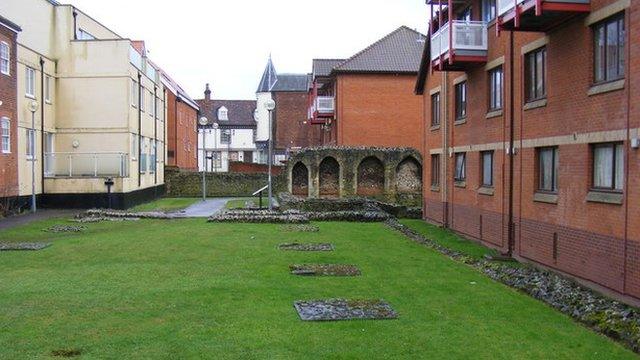Black Death study for Cambridge college skeletons
- Published
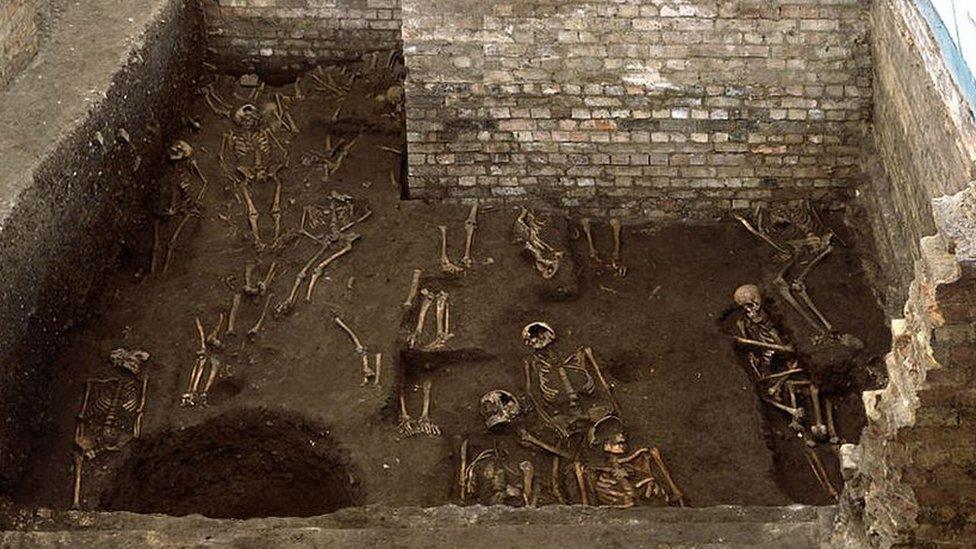
The majority of those buried were laid west to east and placed in pre-dug graves
Hundreds of skeletons found under a Cambridge University college could help researchers map the effect of the Black Death on a medieval town's population.
More than 400 complete skeletons were discovered during work on St John's College between 2010 to 2012.
The remains, dating from the 13th to 15th Centuries, were burials from the Hospital of St John the Evangelist.
The four-year £1.2m study aims to learn more about the health of the urban poor during the epidemic.
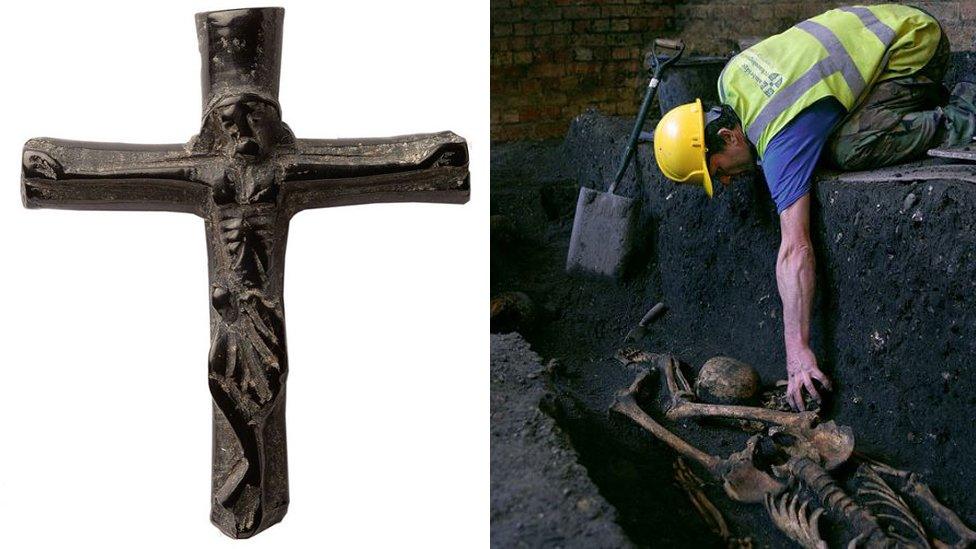
This 15th Century jet cross is one of only two "definite grave-goods" uncovered during the dig
About 1,000 parts from bodies were also discovered in what a St John's College spokesman described as "one of the largest medieval hospital burial grounds ever found in Britain".
The majority of the people buried on the site are poor townsfolk rather than clerics, and include men, women and some children.
The epidemic killed millions of people across Europe.
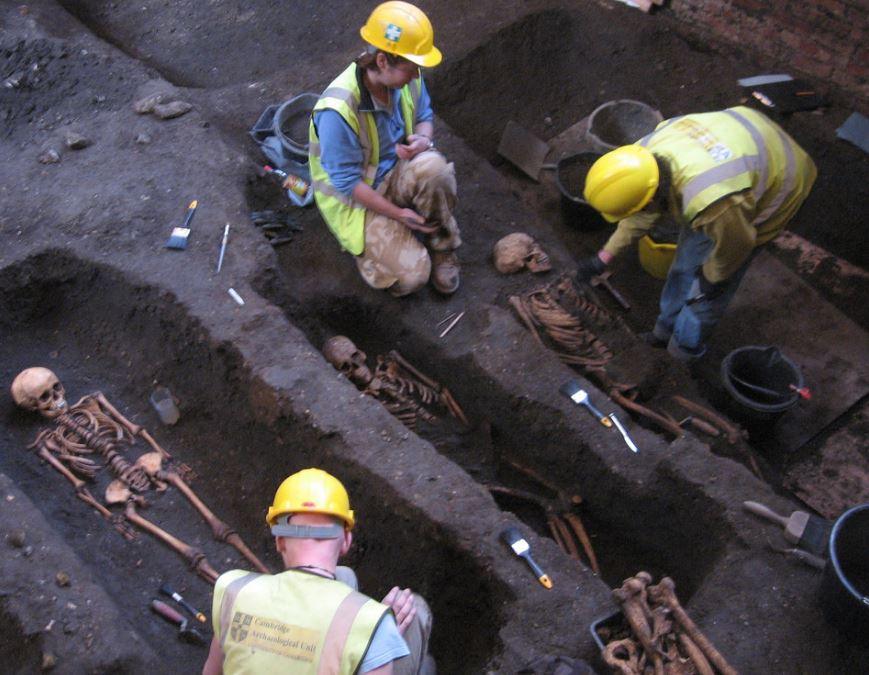
No children under five were discovered during the excavation
Researchers from a number of disciplines, including archaeology, history and genetics, will combine forces to "test directly the effects of the Black Death on a medieval town population before, during and after the epidemic".
The Hospital of St John the Evangelist was an Augustinian charitable establishment, providing care to members of the public between about 1200 and 1500.
The research is funded by the Wellcome Trust and St John's.
- Published1 April 2015
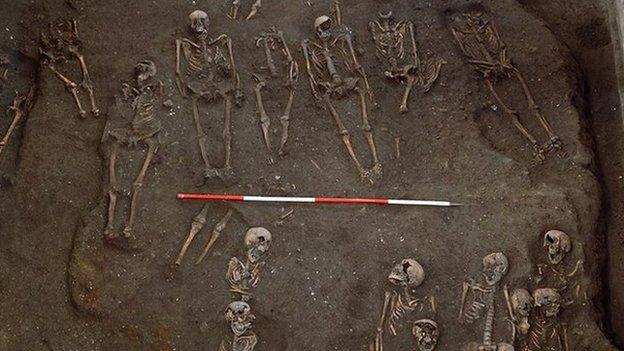
- Published22 March 2015
